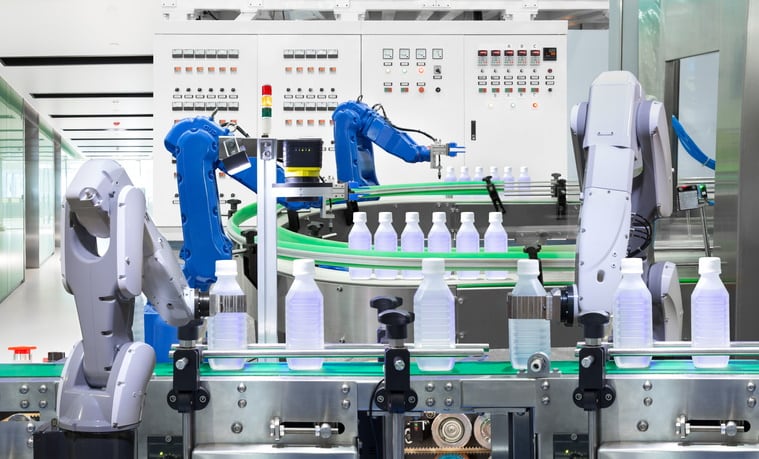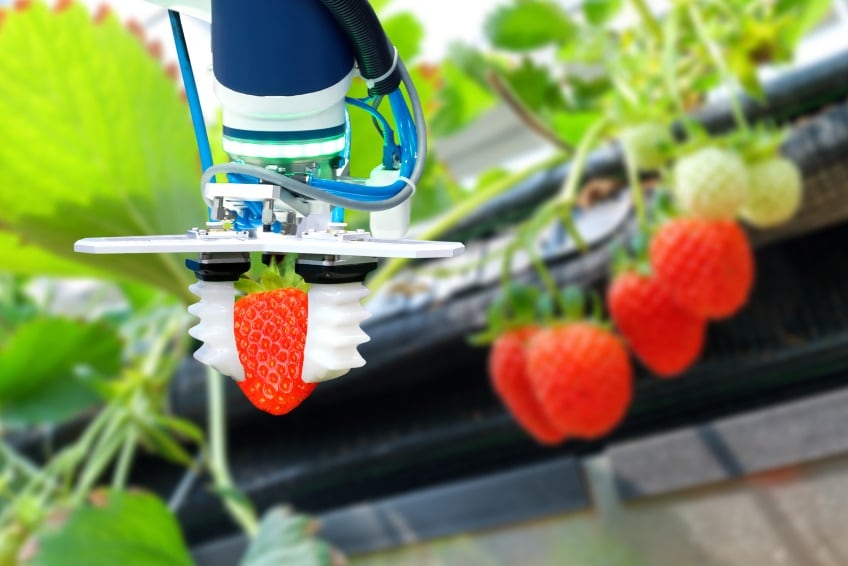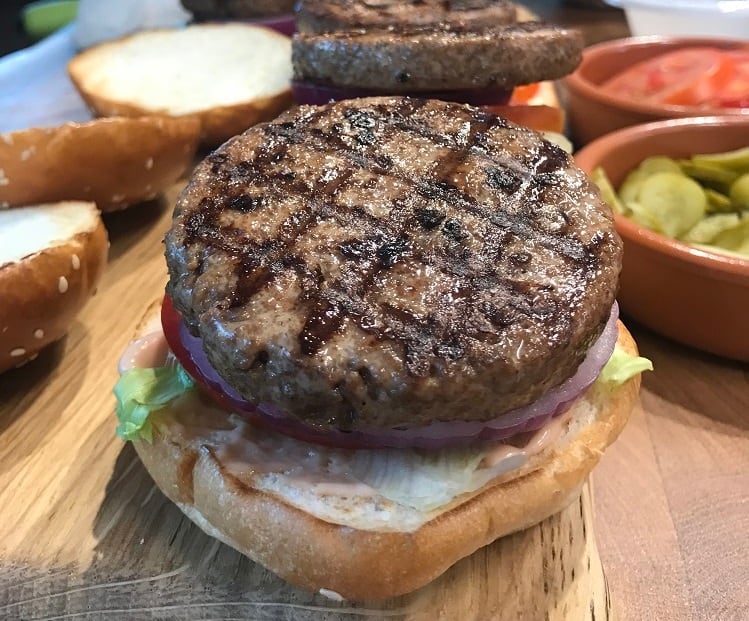The COVID-19 pandemic has placed a stress on food producers across the supply chain. From growers, to manufacturers and caterers, companies have been confronted with the need to implement social distancing measures and have faced workforce shortages as employees fall sick or self-isolate. In some sectors, notably meat packing and sections of the agricultural sector, outbreaks linked to production facilities have forced shutdowns.
In an industry that has long-been wedded to manual, labour intensive processes, the challenges of COVID have opened doors for automation and advanced robotics.
“Manual practices have long been a bottleneck to efficiency and precision in decision-making across the food supply chain. But the restrictions COVID-19 has placed on business operations have - through necessity - opened minds around what automation can bring to the table, and how it can free up time to focus on what really matters,” Thomas Slaugh, enterprise solutions business development at Proagrica, told FoodNavigator.
Vipin Jain, co-founder and CEO of food tech start-up and robotics developer Blendid, agreed. “The COVID-19 pandemic is a crisis that robots were built to help address.”
Advances in robotic technology
Some production functions have long been heavily automated. Handling and packaging automation, for instance, can now be seen in almost every major and medium sized production plant.
“The improvements in ‘gripping’ mostly with some type of vacuum assistance has streamlined the technology. We see it in packaging processes and it is coming up quickly into smaller and mid-sized companies,” Miguel Lutz, territory sales manager at Unifiller Systems, noted.
Technological advances have also expanded the horizon of what robotics can achieve in other functions, making it possible to automate intricate tasks that once required human operatives, Lutz continued.
“Collaborative or secondary processing operations are starting to see robotics and automation, where a specific automated process helps improve efficiency, standardizes processes, and reduces the amount of waste. These can be cutting, counting, mixing or such and they are usually processes in which you improve some part of your production process.
“Before, we saw large stationary machines; now with automation and robotics, we see small, modular machines that do specific processes. This adds versatility as companies can focus on one pain point and use technology to solve an issue.”
According to Jake Norman, head of sales & innovation at machine supplier OAL, the impact of COVID means manufacturers are now looking at whether automation can be applied to almost ‘any critical activity’ that was previously dependent on human operators.
“Any critical activity where manufacturers are reliant on operators alone to complete a task is up for review as manufacturers have had to cope with reduced headcount either through absences or social distancing to protect those on-site throughout the pandemic,” he told us.
“Robotic and automated solutions for the packaging line are widespread but it’s operations upstream that offer the greatest opportunity for both savings, safety and increased productivity.”
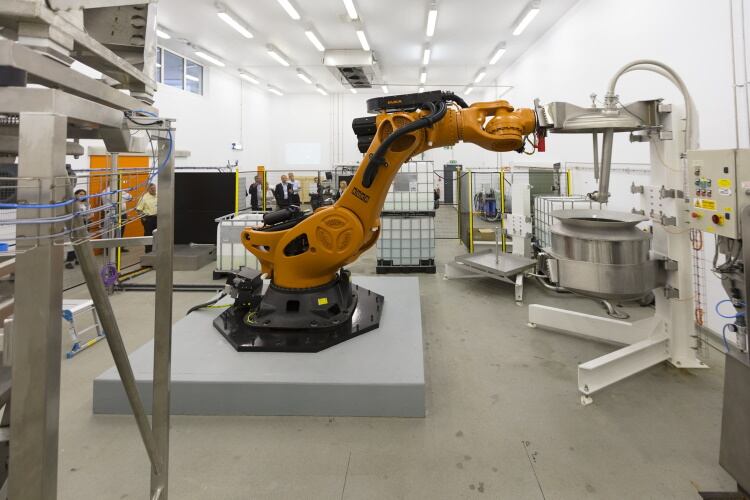
Robotics: A hero for hospitality?
No sector has been harder hit by the coronavirus crisis and subsequent national lockdowns than hospitality. Blendid’s Jain sees opportunity for food service operators to embrace automation in a way that, he believes, can reassure consumers that what they are buying is safe while also cutting costs.
“The food service industry has been struggling with rising labour costs, availability of labour for 24x7 food service and decreasing margins for years. Consumers are afraid to visit food facilities due to safety issues creating a downward spiral for demand and revenue, while operator costs are going up due to COVID processes necessary for safety of customers and employees. It’s unsustainable for food service operators,” he observed.
“Thankfully there are technology solutions that can help the food service industry during these difficult times and for the future. They can efficiently, safely, and reliably assemble, cook, and serve food to consumers - therefore helping food operators survive and thrive with much-needed profit margins. Specially the advances in robotics precision and costs, coupled with software advances in AI are driving innovation, lowering operating costs and increasing margins in the traditionally low-margin food service sector.”
Blendid is a start-up that developed contactless robot smoothie kiosks that have currently been deployed across two Walmart locations in the US.
“The COVID-19 pandemic has increased the focus on food safety globally. At Blendid, we’re working with many essential businesses to help integrate a solution for safe, contactless food preparation and delivery,” Jain noted.
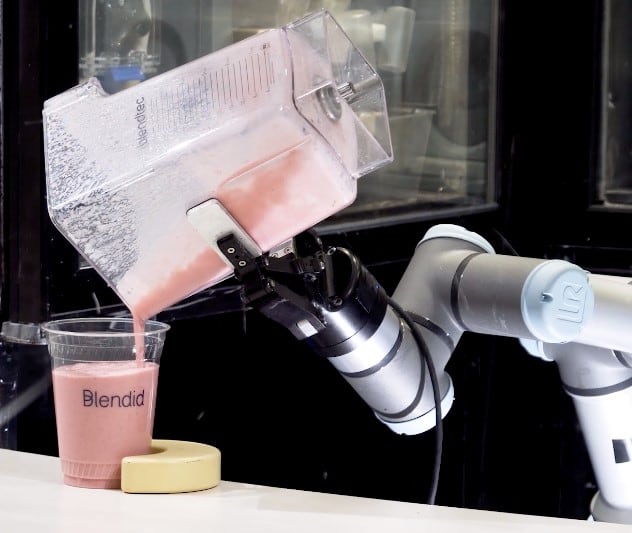
Savings, safety and productivity
Beyond the current conditions under COVID, the experts insist that investing in robotics and automation offers food makers the opportunity to produce safe food, in a cost-efficient way.
This means that food companies who invest in automation are well-placed to deal with challenges ranging from safety and the rising cost of labour to issues around Brexit in the UK. “Robotics and automation allow food manufacturers to move away from over-reliance on labour, which has been a key characteristic of this industry,” OAL’s Norman suggested.
“Another key issue that is facing manufacturers all over the world is that of productivity. In the UK alone, productivity has stagnated since the financial crash of 2008, with output per hour and real wages now no higher than then, and the issue has only been exacerbated by COVID-19. The food and beverage industry must start to do something different to overcome this slump. Robotics and automation allow manufacturers to do the same tasks as humans currently carry out much more accurately and quickly – with no need for breaks or holidays, and never a ‘bad day’ – ensuring that outputs grow.”
Rounding up the benefits of automation, Lutz, Unifiller’s sales manager, also highlights increased productivity. Cost control, quality, reduced downtime, accuracy and waste reduction can all be supported.
Proving provenance
Another benefit to automated processes is that they allow food makers to prove provenance with a recorded chain of custody. This feeds into yet another consumer trend accelerated by the pandemic and associated with food safety – traceability.
“The pandemic has made us more conscious of the food we put into our bodies. Where food comes from, how it was made, how safe it is and how ethically or sustainably it was produced are questions rising up the consumer agenda. Consequently, consumers are demanding more information from grocers who in turn will begin to pass the pressure on to their suppliers,” Proagrica’s Slaugh predicted.
“This matters because supply chain stakeholders reliant on manual or inoperable processes may not be able to prove provenance and provide traceability in the speed or detail required and expected. As a result, automation becomes a much more attractive option - it does the heavy lifting while freeing the grower or manufacturer up to focus on the business of growing.
“Fortunately, there are, if you will, oven-ready tools that can step in. For example, platforms like Cool Farm Tool [developed by Cool Farm Alliance] help growers better understand their environmental impacts. Innovative technologies that harness the power of AI and machine learning can collect data that can be turned into customer-focused, actionable insight that benefits everyone from seed to fork.”While he conceded there are challenges to overcome – particularly around sharing third party data - Slaugh is optimistic about the future of food and ag tech.
“If anything, this year has shown we can pivot and innovate at remarkable speed. I believe we’ll see the ag supply chain continue to make great strides towards adoption of automation this year - not only because they must change to keep pace with shifting consumer demands, but because, in the end, they’ve grown to like it too.”

